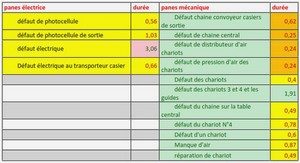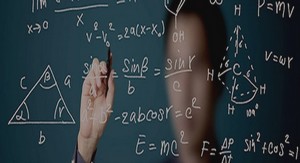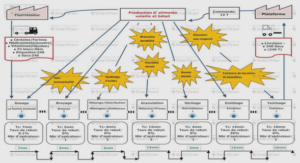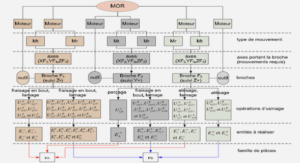MATHEMATICAL AND PHYSICAL BACKGROUND
A short survey of the mathematical and physical background of the thesis is presented in this appendix. The most important aspects are discussed and several references are given for each topic. It is thus intended as a quick reference guide to understand or refresh some deeper technical (and sometimes more obscure) aspects mentioned throughout the thesis. This appendix is structured in 11 sections, including this introduction. In Section A.2 we present several special functions that appear in mathematical physics and which are closely related to our work. Some notions of functional analysis are introduced in Section A.3, in particular Lax-Milgram’s theorem and Fredholm’s alternative. The Sobolev spaces are introduced in Section A.4, which constitute the natural function spaces in which the solutions of boundary-value problems are searched. In Section A.5 we present some operators and integral theorems that appear in vector calculus and in elementary differential geometry. The powerful mathematical tool of the theory of distributions is described in Section A.6. In Section A.7 we describe multi-dimensional Fourier transforms and their properties in the framework of the theory of distributions. In Section A.8 a general outline of Green’s functions and fundamental solutions is found. In section A.9 we present a brief survey of wave propagation and some related topics. Linear water-wave theory, which is one of the main applications for the Laplace equation, is shown in Section A.10. Finally, in Section A.11 we study some aspects of the linear acoustic theory, which is one of the main applications for the Helmholtz equation. A.2 Special functions The special functions of mathematical physics, also known as higher transcendental functions, are functions that play a fundamental role in a great variety of physical and mathematical applications. They can not be described as a composition of a finite number of elementary functions. Elementary functions are functions which are built upon a finite combination of constant functions, elementary field operations (addition, subtraction, multiplication, division, and root extraction), and algebraic, exponential, trigonometric, and logarithmic functions and their inverses under repeated compositions. Elementary functions are divided into algebraic and transcendental functions. An algebraic function is a function which can be constructed using only a finite number of the elementary field operations together with the inverses of functions capable of being so constructed. A transcendental function is a function that is not algebraic, e.g., the exponential and trigonometric functions and their inverses are transcendental. The higher transcendental functions are functions which go even beyond the transcendental functions, and can only be described by means of integral representations and infinite series expansions. Some of them, though, are widely studied due their multiple applications, and are therefore called special functions.Definitions and some properties of several special functions, which are used throughout this thesis, are presented in this section. We begin with the complex exponential and logarithm. They are only transcendental functions, but they allow to comprehend better the other special functions, particularly their properties in the complex plane. The singularities of the Green’s functions studied herein for two-dimensional problems are always of logarithmic type. Afterwards we present the gamma or generalized factorial function. The exponential integral and its related functions appear in the computation of the half-plane Green’s function for the Laplace equation. Bessel and Hankel functions play an important role in problems with circular or cylindrical symmetry. They are also known as cylindrical harmonics and appear in the computation of the Green’s function for the Helmholtz equation in two dimensions. Closely related to them are the modified Bessel functions. Spherical Bessel and Hankel functions appear in problems with spherical symmetry and, in particular, in the computation of the Green’s function for the Helmholtz equation in three dimensions. Struve functions can be seen as some sort of perturbed Bessel and Hankel functions, and appear when taking primitives of them. They also appear in some impedance calculations. Finally we present the Legendre functions, the associated Legendre functions, and the spherical harmonics, which are all closely related, and which appear in problems with spherical symmetry. The special functions and their properties are deeply linked with the theory of complex variables. To understand the former, some knowledge is required of the latter, which deals with the complex imaginary unit, i = √ −1, and with related topics, such as complex integration contours, residue calculus, analytic continuation, etc. Some references for the complex variable theory are Arfken & Weber (2005), Bak & Newman (1997), Dettman (1984), and Morse & Feshbach (1953). Further interesting topics are the theory of asymptotic expansions (Courant & Hilbert 1966, Dettman 1984, Estrada & Kanwal 2002), and the methods of stationary phase and steepest descent (Bender & Orszag 1978, Dettman 1984, Watson 1944). Specific references for special functions are given in each subsection. In particular, some references which are useful for almost all of these special functions are Abramowitz & Stegun (1972), Erdelyi (1953), and Magnus & Oberhettinger (1954). An- ´ other somewhat older but still quite interesting reference is Jahnke & Emde (1945).
Complex exponential and logarithm
Complex exponential
The complex exponential and logarithm are trascendental functions that play a central role in the theory of complex functions. Even though they are not considered to be special functions, their intrinsic properties allow a far better comprehension of the latter, and are therefore listed herein. Some references are Abramowitz & Stegun (1972), Bak & Newman (1997), Dettman (1984), Jahnke & Emde (1945), and Weisstein (2002). The complex exponential is an analytic function in the entire complex z-plane, being thus an entire function, and it coincides with the usual exponential function for real arguments, which is shown in Figure A.1. It is defined by exp z = e z = e x e iy = e x cos y + i ex sin y, z = x + iy,
Bessel and Hankel functions
Differential equation and definition
Bessel functions, also called cylinder functions or cylindrical harmonics, are special functions that, together with the closely related Hankel functions, appear in a wide variety of physical problems. Some references on them are Abramowitz & Stegun (1972), Arfken & Weber (2005), Courant & Hilbert (1966), Erdelyi (1953), Jackson (1999), Jahnke & ´ Emde (1945), Luke (1962), Magnus & Oberhettinger (1954), Morse & Feshbach (1953), Sommerfeld (1949), Spiegel & Liu (1999), Watson (1944), and Weisstein (2002). We consider the Bessel differential equation of order ν for a function W : C → C, given by z 2 d 2W dz 2 (z) + z dW dz (z) + (z 2 − ν 2 )W(z) = 0, (A.85) where, in general, ν ∈ C is an unrestricted value. The Bessel differential equation is named after the German mathematician and astronomer Friedrich Wilhelm Bessel (1784–1846), who generalized and systemized thoroughly the Bessel functions, although it was the Dutchborn Swiss mathematician Daniel Bernoulli (1700–1782) who in fact first defined them. Independent solutions of this equation are the Bessel functions of the first kind Jν(z) and of the second kind Yν(z), the latter also known as Neumann or Weber function, named respectively after the German mathematicians Franz Ernst Neumann (1798–1895) and Heinrich Martin Weber (1842–1913). They are depicted in Figure A.4 and related through
Modified Bessel functions
Differential equation and definition Modified
Bessel functions are special functions that appear also in a wide variety of physical problems. Roughly speaking, they correspond to Bessel and Hankel functions (vid. Subsection A.2.4) with a purely imaginary argument and therefore they do not oscillate on the real axis as the former but rather increase or decrease exponentially. Some references for them are Abramowitz & Stegun (1972), Arfken & Weber (2005), Erdelyi (1953), Jackson (1999), Jahnke & Emde (1945), Luke (1962), Magnus & Ober- ´ hettinger (1954), Morse & Feshbach (1953), Spiegel & Liu (1999), Watson (1944), and Weisstein (2002). We consider the modified Bessel differential equation of order ν for a function W : C → C, which is given by z 2 d 2W dz 2 (z) + z dW dz (z) − (z 2 + ν 2 )W(z) = 0, (A.148) where, in general, ν ∈ C is an unrestricted value. Independent solutions of this equation are the modified Bessel functions of the first kind Iν(z) and of the second kind Kν(z). They are depicted in Figure A.6. Each is a regular function of z throughout the z-plane cut along the negative real axis, and for fixed z (6= 0) each is an entire function of ν. When ν = n, for n ∈ Z, then Iν(z) is an entire function of z.





